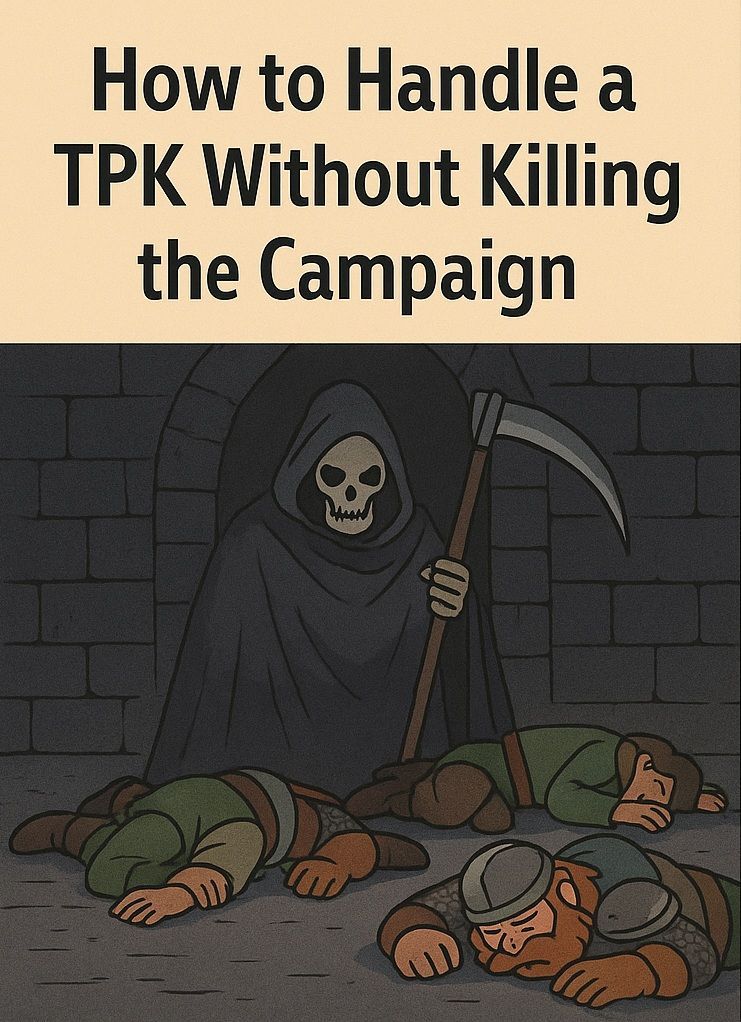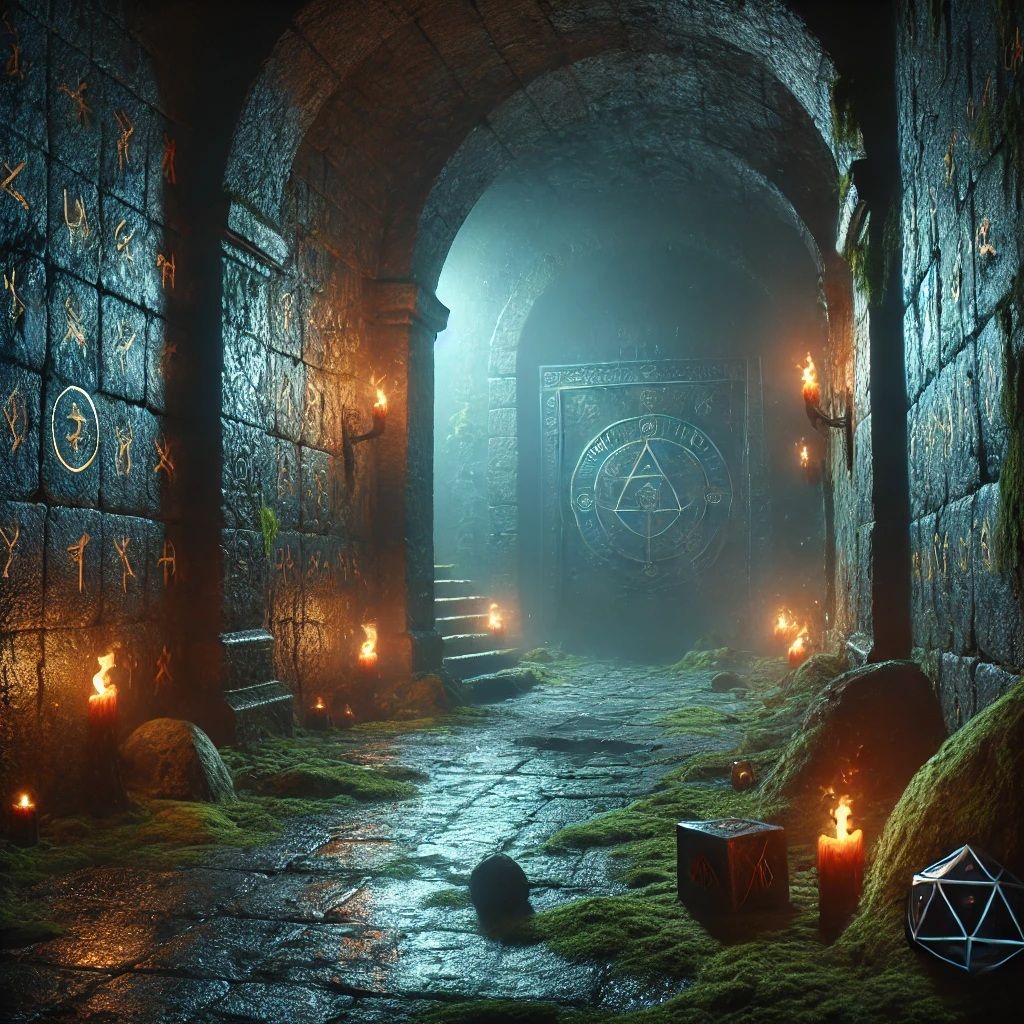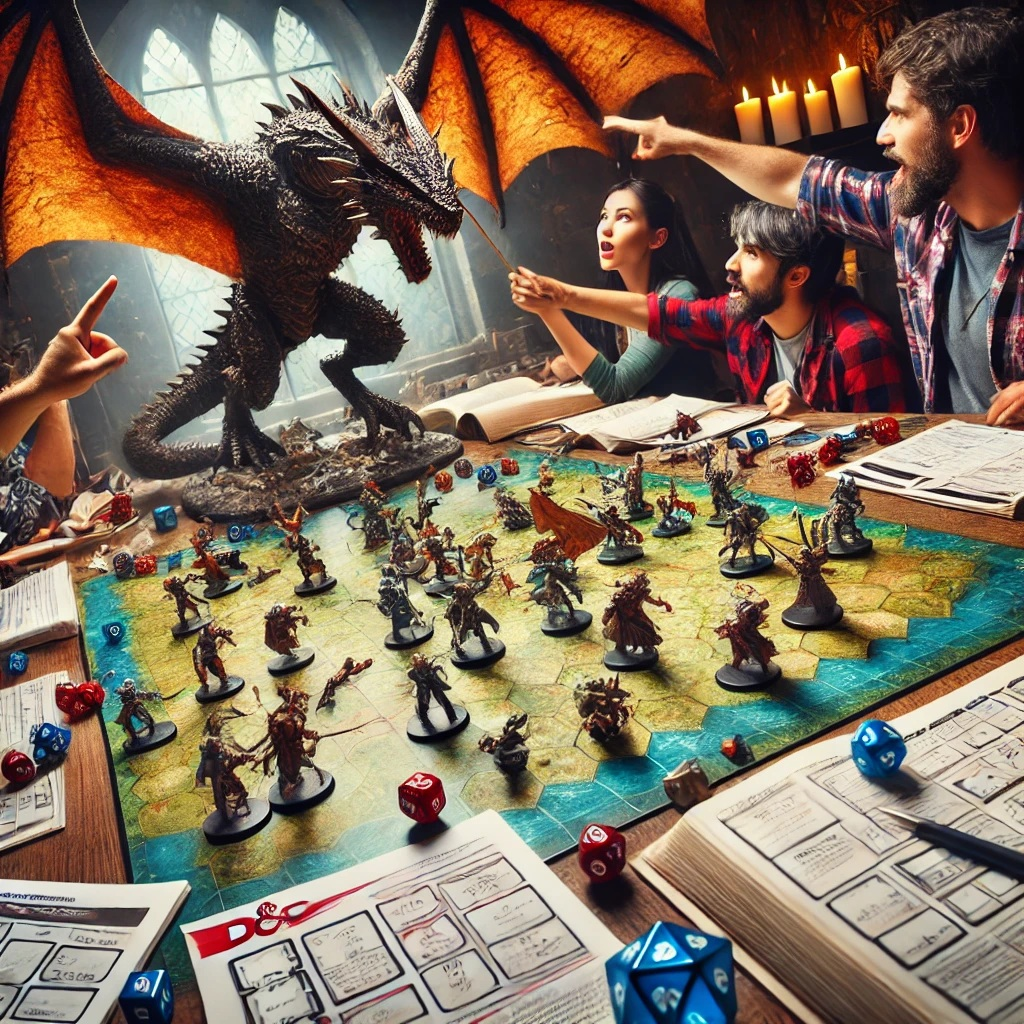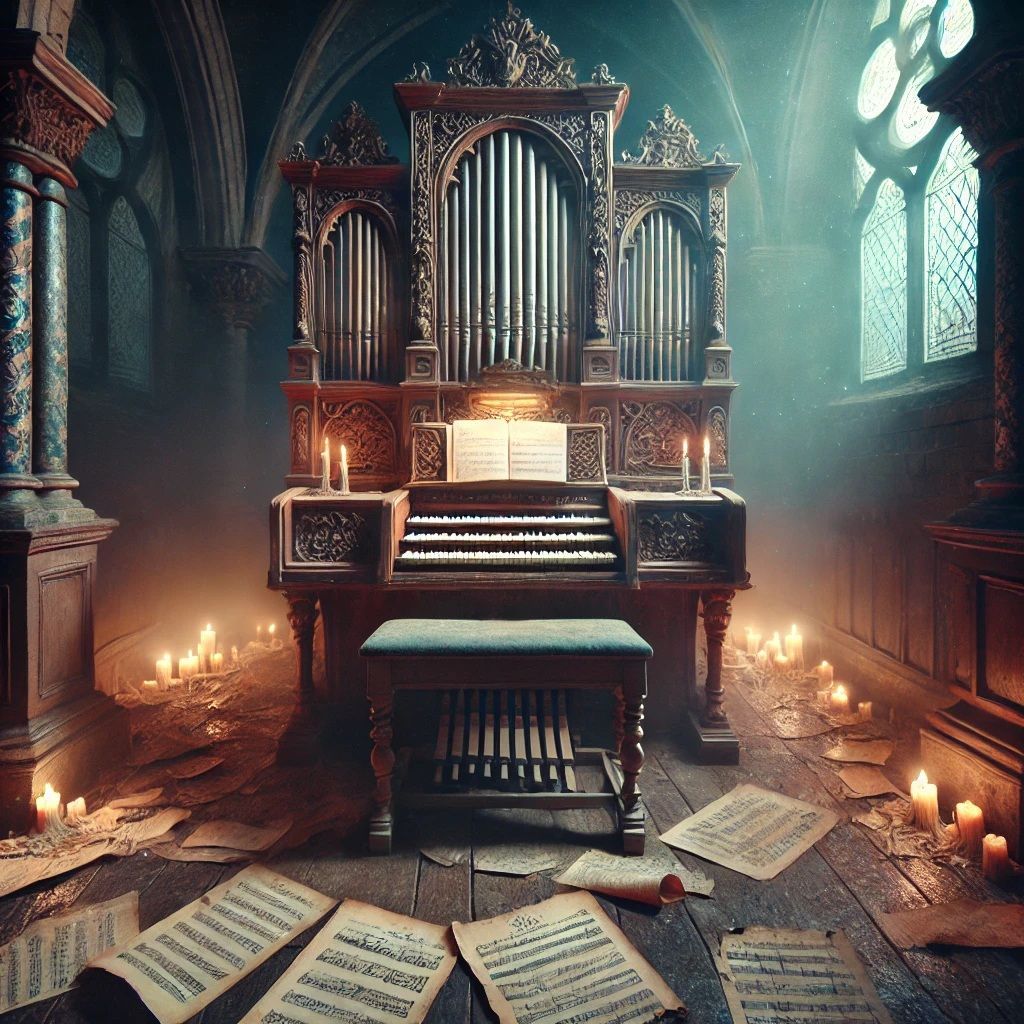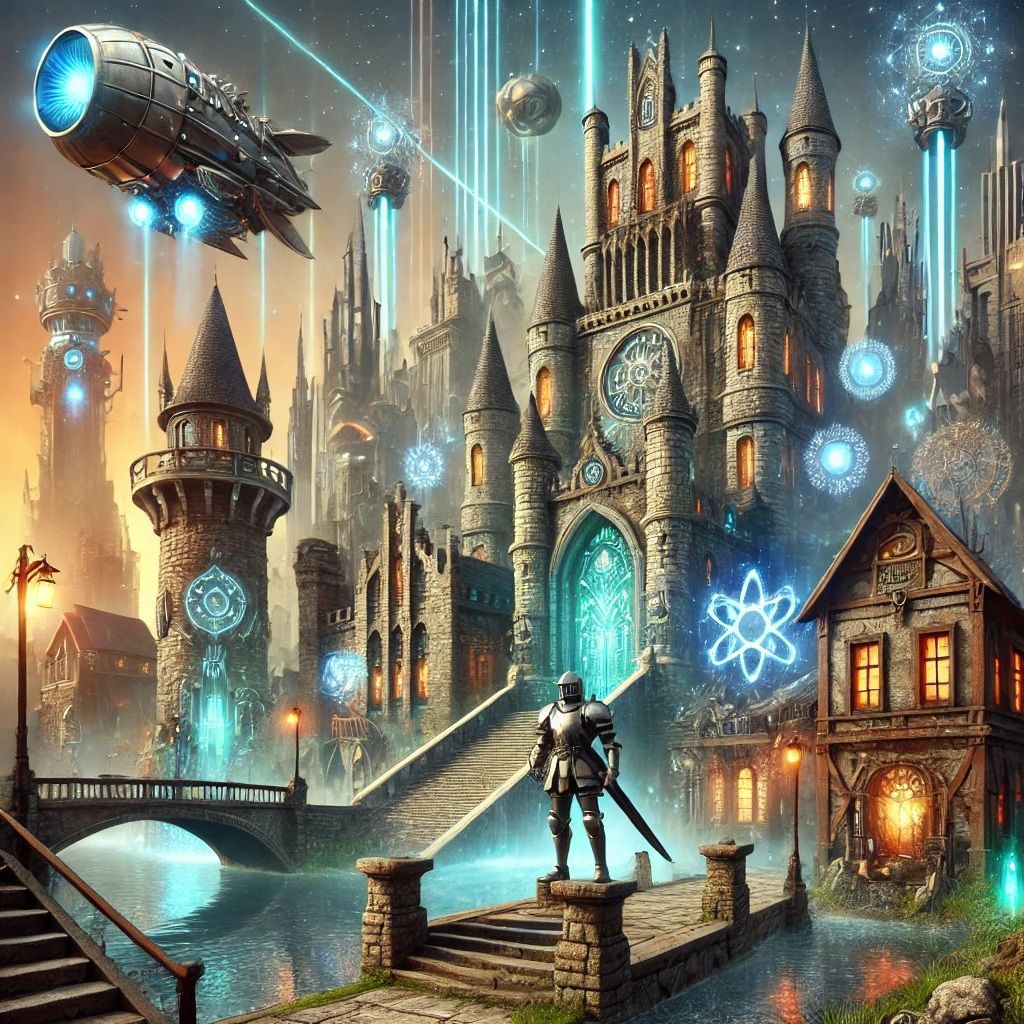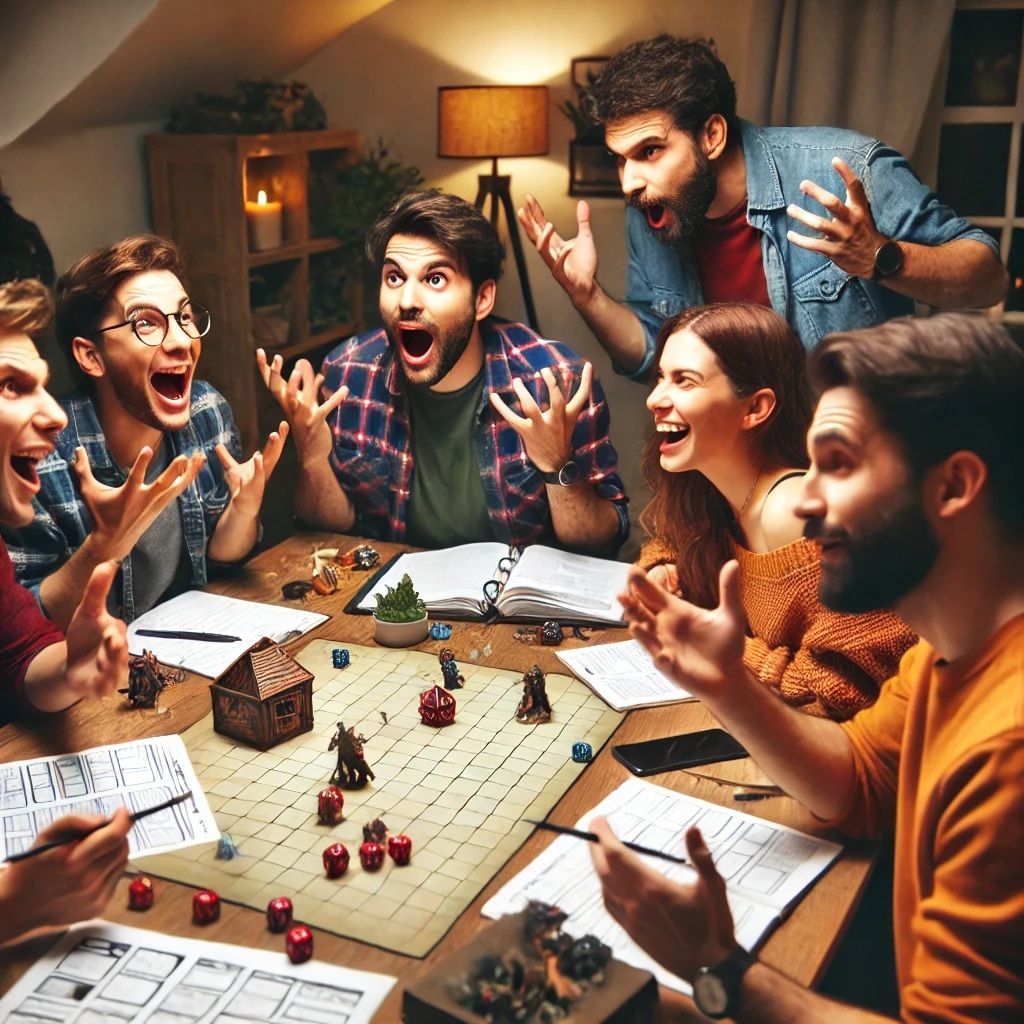Cross-Genre Campaigns: Blending Sci-Fi, Horror, and Other Genres with Fantasy
Dear Readers, welcome back to our Dungeons & Dragons (D&D) blog! Today, we’re exploring the exciting and imaginative world of cross-genre campaigns. Blending different genres like science fiction, horror, and others with traditional fantasy can breathe new life into your campaign, offering unique narratives, diverse settings, and innovative challenges for your players. Cross-genre campaigns allow Dungeon Masters (DMs) to experiment with storytelling elements that go beyond the typical boundaries of fantasy, creating a rich and multifaceted experience. In this post, we’ll discuss the benefits of cross-genre campaigns, provide tips for successfully blending genres, and offer practical examples to inspire your own adventures. So, let’s dive into the world of cross-genre campaigns and discover how to create unforgettable, genre-blending adventures.
The Benefits of Cross-Genre Campaigns
Cross-genre campaigns bring numerous advantages to your D&D game, enhancing the overall experience for both players and DMs. Here are some key benefits:
1. Fresh Narratives and Settings
Blending different genres introduces fresh and unique narratives, breaking away from traditional fantasy tropes. This keeps the game exciting and unpredictable, as players encounter elements they wouldn’t typically expect in a standard fantasy setting.
Example: A campaign set in a post-apocalyptic world where remnants of ancient magic coexist with futuristic technology, creating a backdrop that feels both familiar and new.
2. Diverse Challenges
Cross-genre campaigns present a wide array of challenges that test players’ skills in different ways. Whether it’s dealing with futuristic technology, surviving a horror scenario, or navigating a noir mystery, players must adapt and think creatively.
Example: Players must disable a rogue AI controlling a city while dealing with magical anomalies that disrupt their technological equipment.
3. Enhanced Role-Playing Opportunities
Mixing genres provides rich role-playing opportunities as characters navigate a world that blends different themes and settings. This allows for deeper character development and more varied interactions with the game world.
Example: A character who is a traditional wizard must come to terms with the existence of alien technology that defies their understanding of magic.
4. Expansive World-Building
Cross-genre campaigns enable DMs to create expansive and intricate worlds that combine the best elements of different genres. This results in a more immersive and detailed setting that captures the imagination.
Example: A sprawling city where Victorian-era aesthetics meet steampunk inventions and arcane magic, creating a rich tapestry of cultures and technologies.
Tips for Successfully Blending Genres
Blending different genres into a cohesive and engaging campaign requires careful planning and creativity. Here are some tips to help you successfully integrate multiple genres into your D&D campaign:
1. Establish Core Themes
Identify the core themes you want to explore in your campaign. These themes will serve as the foundation for your narrative and help you integrate different genres seamlessly.
Example: If your core themes are exploration and discovery, you might blend fantasy with sci-fi elements, such as exploring ancient ruins that contain advanced alien technology.
2. Maintain Consistent World-Building
Ensure that your world-building remains consistent, even when blending different genres. Establish clear rules for how different elements interact and fit together within your setting.
Example: In a campaign that blends fantasy and horror, decide how magical creatures are affected by supernatural horrors, and ensure these interactions are consistent throughout the game.
3. Introduce Genres Gradually
Introduce new genres gradually to avoid overwhelming your players. Start with a strong fantasy foundation and slowly weave in elements from other genres, giving players time to adjust and explore these new aspects.
Example: Begin with a traditional fantasy setting and introduce sci-fi elements through a crashed spaceship or a mysterious artifact that reveals advanced technology.
4. Balance Genre Elements
Strive for a balanced mix of genre elements, ensuring that no single genre overshadows the others. This balance creates a more cohesive and enjoyable experience for your players.
Example: In a campaign blending fantasy and noir, ensure that the gritty detective work is complemented by magical mysteries and arcane secrets.
5. Embrace Player Creativity
Encourage players to embrace the cross-genre setting and incorporate it into their character development and role-playing. This enhances immersion and makes the world feel more dynamic and lived-in.
Example: Allow players to create characters that reflect the blended setting, such as a rogue with a background in cybernetics or a bard who uses futuristic sound technology in their performances.
Practical Examples of Cross-Genre Campaigns
To illustrate how you can blend different genres into your D&D campaign, here are practical examples of cross-genre campaigns that incorporate elements of sci-fi, horror, and other genres with fantasy:
Example 1: Sci-Fi Fantasy – “The Shattered Star”
Setting: The world of Aetheria, a once-thriving magical realm, is now scattered across the cosmos after a catastrophic event known as the Shattering. Fragments of the world float in the void, connected by ancient portals and inhabited by diverse species.
Core Themes: Exploration, survival, and the clash between magic and technology.
Plot Overview: The players are a group of adventurers tasked with exploring the fragmented world of Aetheria, uncovering lost knowledge, and restoring balance. They encounter advanced alien civilizations, remnants of ancient magical societies, and strange creatures born from the union of magic and technology.
Key Elements:
- Magical Portals: Ancient portals that connect the floating fragments of Aetheria, allowing travel between different environments and cultures.
- Alien Technology: Advanced technology from alien civilizations that crash-landed on Aetheria, now integrated with local magic.
- Arcane Relics: Powerful magical artifacts scattered across the fragments, each with unique properties and histories.
Challenges and Encounters:
- Tech-Magic Hybrids: Creatures and constructs that combine elements of magic and technology, posing unique threats and requiring creative solutions.
- Alien Diplomacy: Negotiating with alien civilizations to gain access to their technology and knowledge, while avoiding interstellar conflicts.
- Fragmented Landscapes: Navigating the diverse and dangerous terrains of the floating fragments, from verdant forests to barren wastelands.
Role-Playing Opportunities:
- Cultural Exchange: Characters can explore the cultural differences between the magical inhabitants of Aetheria and the alien visitors, leading to rich role-playing moments.
- Technological Adaptation: Characters must learn to use and integrate alien technology with their existing magical abilities, leading to unique character development.
Example 2: Horror Fantasy – “The Cursed City”
Setting: The city of Ravenshade, a gothic metropolis shrouded in perpetual twilight and plagued by supernatural horrors. The city’s inhabitants live in fear of the night, as creatures of darkness stalk the streets.
Core Themes: Survival, fear, and uncovering hidden truths.
Plot Overview: The players are investigators hired to uncover the source of the curse that afflicts Ravenshade. As they delve into the city’s dark history, they encounter malevolent spirits, cursed artifacts, and a sinister cult that seeks to unleash an ancient evil.
Key Elements:
- The Veil: A mysterious barrier that keeps the city in perpetual twilight and prevents escape, controlled by dark magic.
- Haunted Locations: Key locations within the city, such as abandoned mansions, forgotten catacombs, and eerie graveyards, each with their own ghostly inhabitants and dark secrets.
- Cursed Artifacts: Powerful relics that hold the key to lifting the curse, but which also carry their own dangers and consequences.
Challenges and Encounters:
- Supernatural Creatures: Ghosts, wraiths, and other horrors that require both combat prowess and investigative skills to defeat or appease.
- Psychological Horror: Encounters that test the characters’ sanity and resolve, such as visions of their worst fears or haunted dreams that provide cryptic clues.
- Cult Conspiracy: Unraveling the plans of the sinister cult, which involves infiltration, gathering evidence, and confronting the cult leaders.
Role-Playing Opportunities:
- Moral Dilemmas: Characters must make difficult choices, such as deciding whether to use a cursed artifact to save the city, knowing it could have dire consequences.
- Personal Hauntings: Each character is haunted by personal ghosts from their past, providing opportunities for deep character exploration and development.
Example 3: Noir Fantasy – “Shadows of the City”
Setting: The city of Ebonport, a bustling metropolis filled with intrigue, crime, and corruption. The city’s dark alleyways and opulent manors hide countless secrets, and powerful factions vie for control.
Core Themes: Investigation, moral ambiguity, and the quest for justice.
Plot Overview: The players are private investigators hired to solve a high-profile murder case. As they delve deeper into the investigation, they uncover a web of corruption, hidden agendas, and a powerful magical artifact that everyone is after.
Key Elements:
- The Black Market: An underground network where anything can be bought or sold, from stolen goods to illegal magic.
- Factions: Various factions with their own interests, such as the Thieves’ Guild, the Mage’s Circle, and the Noble Council, each with their own secrets and motives.
- The Artifact: A powerful and dangerous magical item that is the key to the mystery, sought after by multiple parties.
Challenges and Encounters:
- Interrogations: Questioning suspects and witnesses, using a mix of persuasion, intimidation, and insight to gather clues.
- Crime Scenes: Investigating crime scenes for hidden evidence, using both mundane and magical means to uncover the truth.
- Double Crosses: Navigating a world of deception and betrayal, where allies can become enemies and vice versa.
Role-Playing Opportunities:
- Moral Choices: Characters must navigate the grey areas of the law and make tough decisions about who to trust and how far they are willing to go for justice.
- Character Backstories: Integrate characters’ personal histories into the investigation, such as old rivals, past loves, and family secrets, creating a deeply personal narrative.
Blending Additional Genres with Fantasy
While sci-fi, horror, and noir are popular genres to blend with fantasy, there are many other genres that can add unique flavors to your campaign. Here are a few more examples:
1. Western Fantasy – “The Frontier of Ashwood”
Setting: The frontier town of Ashwood, set in a vast, untamed wilderness where magic and gunslingers coexist. The town is a haven for outlaws, adventurers, and settlers seeking fortune and freedom.
Core Themes: Lawlessness, survival, and the clash between civilization and the wild.
Plot Overview: The players are bounty hunters tasked with bringing order to Ashwood and its surrounding territories. They face dangerous outlaws, mystical threats from the wilderness, and moral dilemmas about justice and survival.
Key Elements:
- Outlaw Gangs: Ruthless gangs that control parts of the frontier, each with their own unique skills and magical abilities.
- Magical Beasts: Mythical creatures that roam the wilderness, posing threats and opportunities for adventurers.
- Ancient Ruins: Remnants of a lost civilization hidden in the wilds, filled with magical artifacts and secrets.
Challenges and Encounters:
- Shootouts: Intense combat encounters with outlaws, blending gunfights and magical duels.
- Survival: Navigating the harsh wilderness, dealing with limited supplies, and facing natural hazards.
- Law and Order: Deciding how to bring justice to the lawless frontier, balancing strict enforcement with compassion and understanding.
Role-Playing Opportunities:
- Frontier Justice: Characters must navigate the complexities of frontier justice, making decisions that impact the lives of settlers and outlaws alike.
- Cultural Clashes: Exploring the interactions between settlers, indigenous peoples, and magical creatures, creating rich role-playing dynamics.
2. Steampunk Fantasy – “Gears of the Arcane”
Setting: The city of Brasshaven, a steampunk metropolis where clockwork technology and arcane magic coexist. The city is a marvel of engineering and enchantment, filled with airships, automatons, and magical inventions.
Core Themes: Innovation, progress, and the tension between tradition and modernity.
Plot Overview: The players are inventors and adventurers drawn to Brasshaven by rumors of a revolutionary device that could change the world. They must navigate corporate espionage, political intrigue, and the mysteries of the device’s origin.
Key Elements:
- Invention Guilds: Powerful guilds that control different aspects of technology and magic, each vying for dominance and innovation.
- Airship Pirates: Sky-faring outlaws who raid airships and settlements, seeking wealth and freedom.
- The Device: A mysterious and powerful invention that holds the key to the campaign’s central mystery, with both technological and magical components.
Challenges and Encounters:
- Heists: Infiltrating secure facilities to steal plans, prototypes, or resources, using a mix of stealth, technology, and magic.
- Airship Battles: High-flying combat encounters on airships, blending traditional combat with aerial tactics and steampunk inventions.
- Corporate Intrigue: Navigating the complex politics of invention guilds, making alliances, and uncovering secrets.
Role-Playing Opportunities:
- Inventor’s Dilemma: Characters must grapple with the ethical implications of their inventions, deciding whether progress is worth the potential costs.
- Social Dynamics: Exploring the interactions between different social classes, from wealthy industrialists to working-class laborers, creating a rich tapestry of role-playing opportunities.
3. Detective Fantasy – “Arcane Detectives”
Setting: The city of Mystvale, a bustling urban center filled with magic and mystery. The city’s streets are teeming with arcane secrets, and the players are private detectives specializing in magical crimes.
Core Themes: Investigation, justice, and uncovering hidden truths.
Plot Overview: The players are hired to investigate a series of magical crimes that lead them into the heart of Mystvale’s underworld. They must solve puzzles, gather evidence, and confront powerful adversaries to bring justice to the city.
Key Elements:
- Magic Noir: A blend of noir aesthetics with magical elements, creating a dark and atmospheric setting filled with arcane mysteries.
- Arcane Crimes: Crimes that involve magical elements, such as enchanted artifacts, spell-based murders, and supernatural phenomena.
- The Underworld: A network of criminals, smugglers, and rogue mages who operate in the shadows, each with their own secrets and agendas.
Challenges and Encounters:
- Crime Scene Investigations: Examining crime scenes for magical clues, using both detective skills and arcane knowledge to uncover the truth.
- Interrogations: Questioning suspects and witnesses, using a mix of persuasion, intimidation, and magical insight to gather information.
- Showdowns: Confronting powerful adversaries in dramatic encounters, blending traditional combat with magical duels and clever tactics.
Role-Playing Opportunities:
- Moral Complexity: Characters must navigate the grey areas of the law, making tough decisions about justice and loyalty.
- Personal Connections: Integrating characters’ personal histories and relationships into the investigation, creating a deeply personal narrative.
Conclusion
Cross-genre campaigns offer a wealth of opportunities to create unique, engaging, and immersive D&D experiences. By blending elements of sci-fi, horror, noir, and other genres with traditional fantasy, you can craft rich narratives, diverse settings, and innovative challenges that captivate your players and keep them coming back for more.
Remember to establish core themes, maintain consistent world-building, introduce genres gradually, balance genre elements, and embrace player creativity. Whether you’re exploring the mysteries of a fragmented magical world, surviving the horrors of a cursed city, or navigating the intrigue of a steampunk metropolis, cross-genre campaigns allow you to push the boundaries of your storytelling and create unforgettable adventures.
Until next time, Dear Readers…















